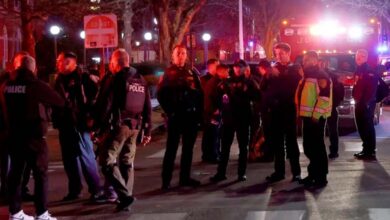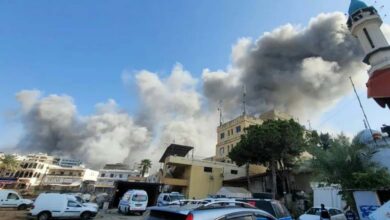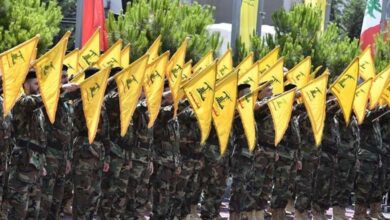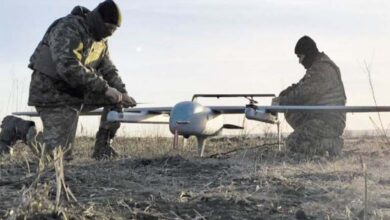One year after the end of the war… 669 Israeli strikes in Lebanon and 360 Hezbollah fighters killed

Lebanon marks on Thursday the first anniversary of the ceasefire between Israel and Hezbollah, yet the country remains caught between hopes for stability and fears of renewed escalation.
As it enters its second year, the already fragile ceasefire agreement between Israel and Lebanon appears more delicate than ever.
In recent months, hardly a day has passed without an Israeli official threatening a broad or limited military operation in Lebanon.
-
Hezbollah’s knockout strike strategy falters amid Israeli divisions
-
From drones to smart munitions: how is Hezbollah rearming itself?
While Israel has not been attacked since the ceasefire was signed on 27 November 2024, Lebanon has continued to face daily Israeli strikes.
This situation was reflected in remarks made by Israeli Defense Minister Yoav Gallant during a meeting of the parliamentary Foreign Affairs and Defense Committee on Wednesday. He said: “We have not seen a better security situation on the northern border in twenty years.”
He added: “Three hundred and sixty Hezbollah fighters have been killed since the ceasefire,” meaning that nearly one fighter has been killed every day since the agreement came into force.
-
Hezbollah responds to the November deadline and signals its commitment to keeping its weapons
-
From Disarmament to Rearmament… Hezbollah Moves as Israel Loses Patience
The United Nations Interim Force in Lebanon (UNIFIL) has recorded more than 10,000 Israeli air and ground violations inside Lebanon during the first year of the ceasefire.
On the platform X, UNIFIL wrote: “Since the cessation of hostilities agreement last year, we have recorded more than 7,500 air violations and nearly 2,500 ground violations north of the Blue Line.”
The Lebanese government has repeatedly condemned these violations, while Hezbollah has maintained an unprecedented level of silence.
Israel argues that all its attacks target Hezbollah’s efforts to rearm and rehabilitate its military capabilities.
-
Israel announces the killing of a Hezbollah commander: the logistics support chief
-
Israeli Airstrikes on Lebanon’s Bekaa and North: Hezbollah Infrastructure and Missile Sites Targeted
Missing provisions
The ceasefire agreement stated that, in addition to halting hostilities, Lebanon would withdraw all non-governmental military forces and assets from the area between the Litani River and the Israeli border, leaving only the Lebanese Armed Forces and state security agencies.
In return, Israel was expected to withdraw gradually from areas it occupies in southern Lebanon within 60 days.
The agreement also stipulated that the United States would mediate indirect negotiations between Israel and Lebanon to achieve an internationally recognized land border demarcation.
-
Washington warns of potential Israeli unilateral action if Hezbollah is not disarmed
-
A warning to Hezbollah: Israel’s largest drill on the Lebanese border since October 7
But a year later, none of these objectives have been achieved. Israel still occupies five border positions inside Lebanon and launches daily strikes, including in Beirut’s southern suburbs and even the Bekaa region.
Last Sunday, Israel killed Hezbollah military commander Haitham Tabatabaei in an airstrike in the heart of Beirut’s southern suburb.
Prime Minister Benjamin Netanyahu’s government vowed that this would not be the last strike unless the Lebanese government stepped up efforts to disarm Hezbollah.
In September, the Lebanese Army submitted a plan to disarm all non-governmental militias, with a particular focus on Hezbollah. Israel claims that the plan has not been implemented.
Observers, however, argue that the Lebanese government and army are attempting to avoid an open confrontation with Hezbollah and are instead pursuing negotiations and political pressure.
-
After the Gaza Agreement… Receding Justifications and Rising Pressure to Disarm Hezbollah
-
Israeli army announces elimination of two Hezbollah commanders
Daily attacks
According to a report by the Israeli Alma Research Center, “since the agreement came into force, the Israeli army has conducted daily operations in response to Hezbollah’s violations and ongoing reconstruction efforts.”
The report states: “During the ceasefire, the Israeli army carried out 669 airstrikes across Lebanon, targeting Hezbollah’s military infrastructure reconstruction in general, as well as more specific efforts such as weapons smuggling, local production, weapons repair, and Hezbollah fighters.”
-
Hezbollah member injured in Israeli strike on Lebanon
-
Hezbollah and disarmament: cautious approval or a tactic to buy time?
It adds: “The Israeli Defense Forces also targeted civilian and economic infrastructure that serves as a base or cover for Hezbollah’s military reconstruction, including engineering equipment, quarries, concrete factories, and Hezbollah members who, through their civilian professions, contribute to these efforts.”
The institute notes: “Despite repeated statements by the Lebanese government and the Lebanese Army on the success of the disarmament process south of the Litani, the reality on the ground is far from reflecting such claims.”
It continues: “The Lebanese state lacks both the capacity and, at times, the willingness to confront Hezbollah. The Lebanese Army, the country’s main force, is extremely limited in its operations and is neither willing nor able to challenge Hezbollah.”
-
U.S. Patience Wears Thin as Hezbollah Disarmament Stalls
-
Hezbollah resists internal and external pressure to disarm
Eleven strikes in Beirut
According to the report, 47 percent of Israeli attacks took place south of the Litani, 38.4 percent north of the river, 13 percent in the Bekaa region, and 1.6 percent in Beirut.
Analysis shows that the most heavily targeted areas are those south of the Litani, near the front line, particularly the villages of Aitaroun (over 50 strikes) and Aita al-Shaab (over 40 strikes), along with Adaisseh and Houla. Most strikes occurred during the early phase of the ceasefire, with a notable decline today in frontline regions.
The report highlights the significance of the number and frequency of strikes in Beirut, representing 1.6 percent of total attacks, or 11 strikes.
-
Israel Warns Naim Qassem: There Will Be No Hezbollah in That Case
-
Israel Announces Killer Beam to Counter Hezbollah
Monthly average
According to the Alma Center, the average number of strikes is 51 per month throughout the ceasefire period.
It reports that nearly 49 percent of targeted killings occurred south of the Litani, representing roughly one-third of total airstrikes.
Finally, it notes that 21 percent of the Hezbollah fighters killed belonged to the Radwan unit, while 28 others belonged to various factions, including 18 from Hamas.












